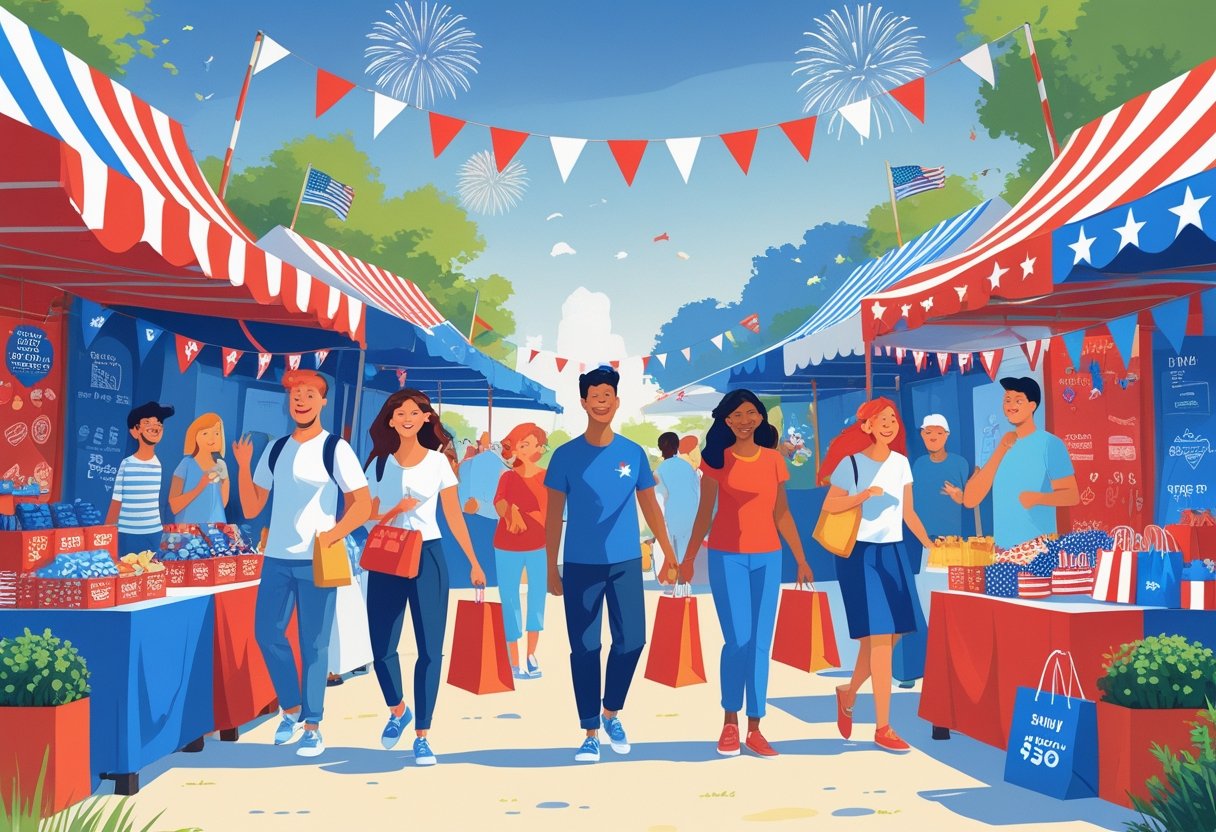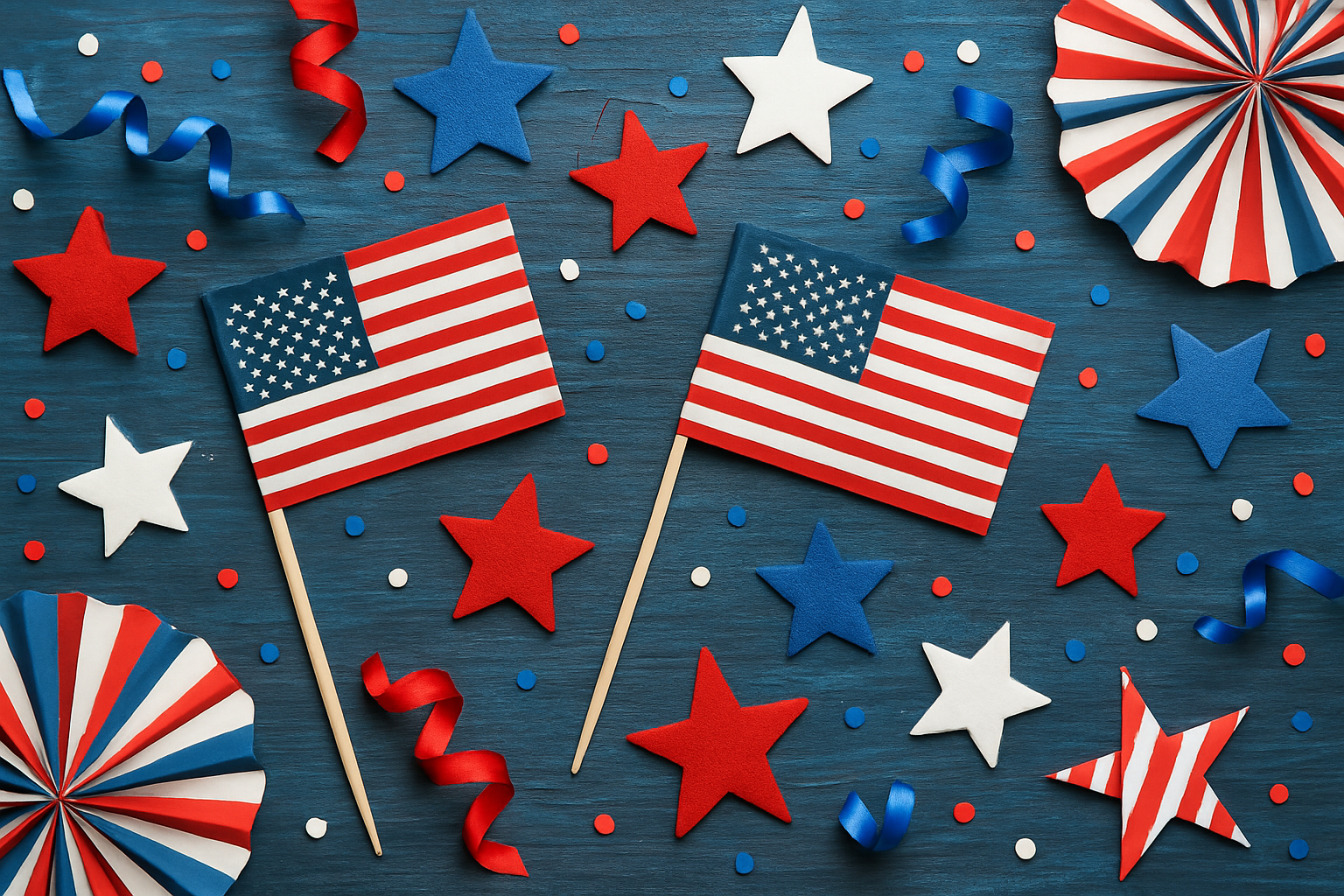Black Friday 2025: Black Friday Coupon Deals and the Origins of Black Friday Explained
By Halie Johnson | Published on June 13, 2025 | Estimated 12 min read

Black Friday 2025 marks another major shopping event where many stores offer significant discounts and special deals. It is a day when shoppers look for Black Friday coupons to save even more on popular products. This day takes place the Friday after Thanksgiving and is known for huge sales both in stores and online.

Black Friday is called so because it traditionally marks the moment when retailers begin to turn a profit, moving from “in the red” to “in the black.” The name also relates to earlier uses, including police calling it a "dark day" due to heavy crowds and traffic issues in cities like Philadelphia. Understanding this helps explain why the day is both exciting for shoppers and challenging for stores.
People often wonder what exactly Black Friday is. It is the biggest shopping day of the year in the United States, signaling the start of the holiday shopping season. Stores compete to draw buyers with deep discounts and special offers, making it a key date for both consumers and sellers to watch closely.
What Is Black Friday

Black Friday is a major shopping event that happens the day after Thanksgiving in the United States. It is known for big sales, crowded stores, and people looking for discounts on many products. The day marks the unofficial start of the holiday shopping season.
Origins of Black Friday
The term "Black Friday" first appeared in the 1960s. It was used by police in Philadelphia to describe heavy traffic and crowds on the day after Thanksgiving. The chaos made the city difficult to manage.
Later, the name took on a different meaning in retail. Stores began making profits "in the black," meaning they moved from losing money to earning money for the year. This explanation links Black Friday to business success instead of traffic problems.
Key Features of Black Friday
Black Friday involves large discounts and special deals offered by many stores. It is not an official holiday, but many people have the day off from work. Retailers often extend their hours to attract more customers.
Sales happen both in physical stores and online. Stores like Walmart, Amazon, and Target offer deep discounts on electronics, clothes, and toys. Crowds are common as people try to get the best deals early in the day.
Typical Shopping Trends
Shoppers focus on big-ticket items such as TVs, laptops, and smartphones. Many use Black Friday coupons to get further discounts. Early morning lines and rushed buying are normal.
Online sales have grown, with many deals starting before the actual day. Mobile apps and websites are popular for finding and using coupons. Shoppers often plan ahead by checking ads and comparing prices from different stores.
For more details about the event each year, see when Black Friday 2025 happens and how it’s celebrated at TheDarkOrigins of Black Friday and sales schedule.
History and Meaning of Black Friday

Black Friday started as a term connected to events after Thanksgiving. Its meaning changed over time from describing chaos to showing business profits. This shift shaped how stores and shoppers see the day today.
Evolution of the Term
The phrase "Black Friday" began in the 1950s in Philadelphia. Police officers used it to describe heavy traffic and crowded streets caused by holiday shoppers. At first, it had a negative meaning tied to confusion and accidents.
By the 1980s, retailers adapted the term to reflect profits. "In the red" meant losing money, while "in the black" showed a business was making money. This new interpretation changed Black Friday into a positive sign for stores, marking the start of the busy holiday season and a boost in sales.
Historical Timeline
- 1950s: Philadelphia police use "Black Friday" for chaotic crowds after Thanksgiving.
- 1960s: Term appears in local news with negative meanings about traffic and disorder.
- 1980s: Retailers redefine the term, focusing on profits and sales growth.
- 1990s onward: Black Friday becomes nationally known as a key shopping day.
- 2000s: Online deals and Cyber Monday join the retail event, expanding the shopping period.
Each step reveals how the meaning of the day changed from confusion to commerce.
Impact on Modern Retail
Black Friday now signals the start of the holiday shopping season. Stores offer large discounts to attract buyers. Many retailers prepare weeks in advance, creating special sales and coupons.
Shoppers expect big savings on electronics, clothes, and more. Businesses often report their highest sales of the year during this time. Online sales have grown alongside in-store shopping, making Black Friday a multi-channel event.
Retailers use this day to increase yearly profits, often turning their annual losses "in the red" to profits "in the black," continuing the trend started in the 1980s. For more about the term’s origins, see the detailed explanation by the Farmers' Almanac.
Why Do We Call It Black Friday
The name "Black Friday" has several explanations linked to different events and ideas from the past. These include stories about busy shopping crowds and the way retailers track their yearly profits. Both ideas show the day’s impact on stores and the public.
Theories on the Name
One early explanation comes from Philadelphia police in the 1950s. They used "Black Friday" to describe the chaotic scene caused by large crowds of shoppers filling the downtown streets the day after Thanksgiving. Traffic jams and crowded stores made it a stressful day for police and drivers.
Another view is that the phrase started with workers, like bus and cab drivers, who faced difficulties transporting the many shoppers. These stories reflect the challenges the day brought to the city, not just the shopping itself.
Accounting Significance
Retailers gave the name a positive spin in the 1980s. They described Black Friday as the day stores move from "red" to "black." "Red" means losing money, and "black" means making a profit. This signified when stores finally started to earn money for the year after months of losses.
This profit explanation made Black Friday more of a celebration for merchants, highlighting a key turning point in retail sales. It also helped promote the day as the biggest shopping event, linking it to savings and deals. You can read more about the origins of Black Friday’s name in this detailed article.
Black Friday 2025
Black Friday 2025 will involve carefully timed sales and new shopping habits. Customers should watch key dates for deals and expect some changes in how retailers offer discounts. Membership perks and online shopping will play a big role this year.
Key Dates to Remember
Black Friday 2025 falls on November 28. Many stores will start early online deals the week before. For example, Walmart’s Black Friday Week 1 runs from November 10 to 16 with online deals for members starting November 11 at noon ET. In-store sales begin November 15 at 6:00 AM local time.
The traditional Black Friday week covers November 24 to 30 for most retailers. Some stores may also offer early access events in early November. Shoppers should check store-specific calendars to catch the best times to buy.
What to Expect in 2025
Retailers like Amazon, Walmart, and Best Buy will give members early access to sales. Membership programs will be more important, offering benefits such as early deals before sales go public. This can help shoppers get popular items before they sell out.
Both in-store and online sales will be common, with many customers opting for online shopping due to convenience. Mobile apps and websites will be optimized to handle the increased traffic. Expect a mix of tech gadgets, toys, and household items as top categories.
Emerging Shopping Trends for 2025
Membership programs will grow in popularity this Black Friday. Retailers will use paid memberships to drive early sales and give loyal customers an advantage. Shoppers may find exclusive deals and free shipping by joining these programs.
Sustainability will also be a bigger focus. Some stores may promote eco-friendly products or offer discounts on energy-saving items. Sale events may last longer than one day, shifting towards multi-day or week-long events to reduce crowding.
More stores will follow the trend of starting Black Friday deals early, even weeks before the official day. This helps spread out purchases and prevents items from quickly selling out.
For more details on Black Friday timing and deals, see Walmart’s 2025 sale calendar.
Black Friday Coupon Strategies
Using coupons during Black Friday can help shoppers get the best deals and save more money. Knowing where to find coupons, understanding the types available, and learning how to use them wisely can make a big difference in overall savings.
How to Find the Best Coupons
The best coupons often come from official retailer websites or trusted coupon platforms. Signing up for store newsletters can give early access to exclusive coupons before Black Friday starts.
Social media channels and apps also share timely coupons. Loyalty programs offer members special discounts and points that can be converted into discounts. Checking deal forums and email alerts helps shoppers stay updated on the latest offers.
Types of Black Friday Coupons
Black Friday coupons come in several forms. Percentage-off coupons reduce the price by a set percent, like 20% off. Dollar-off coupons take a fixed amount off, such as $10 off a purchase over $50.
Some coupons are site-wide and apply to all products, while others target specific categories or brands. There are also free shipping coupons that eliminate delivery charges, and bundle coupons that give discounts when buying multiple items together.
Maximizing Savings with Coupons
To maximize savings, shoppers should combine coupons with store sales or cash-back offers. Using stackable coupons—coupons that work together—can increase discounts, but not all stores allow this.
Timing matters; using coupons during the early hours of Black Friday or during flash sales can yield better prices. Keeping track of coupon expiration dates and reading terms carefully prevents missed opportunities or invalid coupons.
For more on effective Black Friday coupon use, explore Black Friday marketing ideas.
Shopping Tips for Black Friday 2025
Smart shoppers focus on preparation, comparison, and staying calm to get the best deals. Knowing what to buy, where to shop, and avoiding mistakes can save time and money.
Planning Your Shopping List
The first step is to make a clear list of needed items. Prioritize things that have the highest discounts or are limited in stock. Research regular prices in advance to spot real deals.
Setting a budget helps avoid overspending. It’s useful to note stores that offer coupons or extra savings for Black Friday. Having your list ready makes shopping faster and less stressful.
Navigating Online vs. In-Store Deals
Online shopping is fast and allows easy price comparison. Many retailers start deals early, so checking websites before Black Friday can reveal better prices. Shoppers should watch out for shipping costs and delivery times.
In-store deals may offer exclusive discounts but can involve crowds. Arriving early can help get the best items. Comparing both online and store prices can help make smarter choices.
Avoiding Common Shopping Mistakes
Impulse buying is a common problem. Sticking to the list prevents unnecessary purchases. Some deals are less valuable than they seem, so verifying discounts against normal prices is important.
Shoppers should read return policies before buying. Limited stock means popular items sell out quickly, so being patient or flexible helps. Using coupons and watching for hidden fees avoids surprises.
The Global Impact of Black Friday
Black Friday started in the United States in the 1960s but has become a global event. Many countries now participate, offering big sales and discounts. This expansion has made Black Friday an important day for retailers worldwide.
Retailers see a large increase in sales during Black Friday. For example, online shopping has surged by 42% in the U.S., and physical store sales rose 15%. Globally, about 75% of shoppers make purchases during Black Friday and Cyber Monday combined.
Black Friday also affects the environment. The UK alone produces over 386,000 tonnes of carbon from Black Friday-related sales. This pollution matches the emissions from 215 London-Sydney flights. In addition, 80% of purchased goods tend to be quickly discarded or burned.
Here is a summary of key Black Friday facts:
| Aspect | Statistic |
|---|---|
| Global shoppers | 75% shop on Black Friday |
| U.S. online sales | 42% increase in online shopping |
| Carbon emissions | 386,243 tonnes in the UK |
| Waste | 80% of bought goods discarded |
Black Friday drives billions in revenue. In 2025, sales are expected to reach $40.6 billion, a 7% increase from the previous year. The event remains vital for both online and in-store retail sectors.
For more details on Black Friday sales and global trends, see 2025 Black Friday Trends from DHL eCommerce.
Black Friday’s Influence on Holiday Shopping
Black Friday plays a key role in shaping holiday shopping habits. It marks the start of the busiest shopping period of the year, with many consumers planning their purchases around the deals offered on that day.
Retailers use Black Friday to attract large crowds, both in physical stores and online. About 65% of shoppers prefer to visit stores in person, showing that in-store shopping remains important despite the growth of e-commerce.
Key impacts of Black Friday on holiday shopping include:
- Increasing early holiday spending
- Driving demand for popular electronics, clothing, and toys
- Encouraging shoppers to use special coupons and discounts
- Boosting total seasonal sales by a significant margin
Many shoppers now expect Black Friday deals to extend beyond the day itself. Retailers often launch promotions days or weeks early to capture more sales. Offering options like Buy Now, Pay Later (BNPL) helps customers manage their spending during this season.
According to recent trends, roughly 20% of shoppers plan to spend $1,000 or more during Black Friday. This shows the day’s strong influence on consumer budgets and holiday gift purchases.
The event also affects how people view holiday shopping—not just as a last-minute task but as a planned, strategic activity to get the best value. This shift shapes shopping patterns through the entire season.
For detailed insights on Black Friday shopping trends in 2025, visit this page on Black Friday shopping trends.
Maybe You're Interested In Shopping At These Stores
About the Author: Halie Johnson
Halie Johnson is a Marketing Manager and the founder of RetailReviewHub, where she combines over a decade of experience in affiliate marketing and deal hunting to help users save money with confidence. With a deep understanding of consumer behavior and pricing strategy, Halie is dedicated to writing clear, unbiased product reviews and sharing the best deals across the web. When she’s not digging through coupon databases or analyzing offer performance, she enjoys testing products first-hand and writing savings guides that actually work. Follow Halie on her journey to smarter shopping!
Related Posts

Top Independence Day Deals 2025 – Save Big with Verified Coupons at RetailReviewHub
Independence Day is a prime time for shoppers to find great discounts...

Score Explosive July 4th Discounts – Curated Offers on RetailReviewHub
Independence Day 2025 brings a great chance to save on many products w...